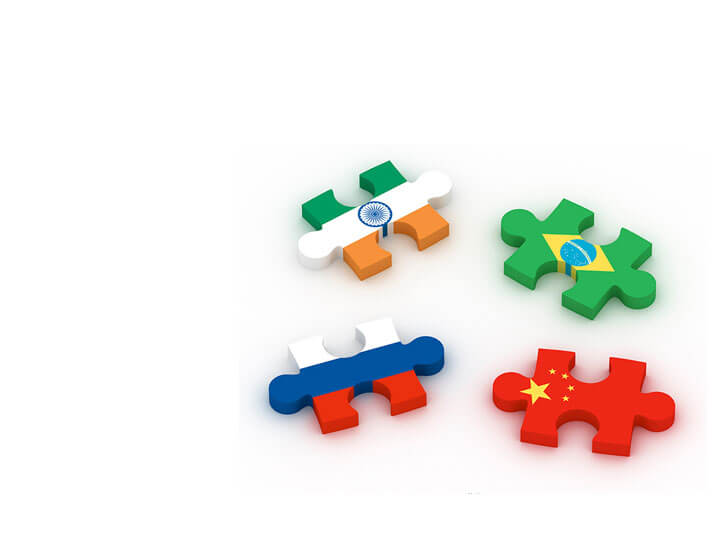70 senior executives with diverse background and expertise attended an IMD Discovery Event on frugal innovation where they had the opportunity to learn about the fundamentals of frugal innovation, discover some of the most representative of such practices employed today by companies in emerging markets and to network with their peers.
Emerging markets are different
Mahmood kicked off the session by asking participants why they used a smartphone device like the Apple iPhone or the Samsung Galaxy. The top answers were brand/image, availability of cool applications, screen size, design, connectivity and compatibility with other devices. But what would that ranking look like for users in India, China or Bangladesh? Consumers in emerging markets place greater emphasis on things like battery life (due to unreliable electricity supply), availability of a speakerphone (because they often eat while on the phone), speakerphone quality (because of high ambient noise in the street or in large families), dual sim card function, multiple address lists and availability of a flashlight.
This illustrates that value creation depends on the customer’s needs. In emerging markets the equation is more complex in that other aspects need to be taken into account: the cost of the product or service (as purchasing power is significanlty lower than in developed economies) and the customer’s location. Value perception will be different depending on whether the consumer is located in an urban or rural area and can vary significanlty across regions and provinces. In order to capture value, companies have to develop products with features that customers perceive to be important to them and that they are willing to pay for. Many companies continuously add more features only to find that consumers are not prepared to pay for them. In emerging markets it is crucial to go back to the drawing board, reflect on the real needs of the particular customer group and design products that exactly match those needs.
Mahmood identified four revolutions that are taking place simultaneously in emerging markets:
Demographic revolution refers to historically high levels of urbanization resulting in a high demand for and low supply of products and services related to housing, electricity, food, water, hospitals and transportation in cities. The investment required is beyond the means of most cities and countries, at least as defined by Western standards, so there is an urgent need to convert minimum resources into tangible benefits for the maximum number of people. This can only be achieved by employing a revolutionary approach to innovation.
Innovation revolution is where people demand 80% benefit for 20% cost. Executives need to think outside of the box to develop products and services that are simple and cheap but of high quality. The protagonists in this revolution are local firms that cater to the needs of consumers by developing relevant products and, at the same time, find creative ways to deliver their offering and scale up their business model. The innovation revolution that takes place at the local level allows a new type of global competitor to emerge.
Competitive revolution is where companies successful in their home markets – such as Airtel, Tata and Haier – start eyeing developed markets. This is already happening. Multinational corporations (MNCs) need to wake up to this new reality and engage in the revolution by taking a fresh look at the different activities across their value chains, from R&D and product development to production, logistics, marketing and sales, if they are to compete with emerging market companies that are becoming global players.
Government revolution relates to the rise of national champions with significant resources and capabilities in emerging markets. This comes at a cost, especially to small and medium size companies, which find it hard to innovate and grow in the face of competition from such players, especially in the context of a weak regulatory environment. The role of government is critical as it needs to encourage small enterprises to continue to experiment, improvise and innovate, but this can be a major challenge when the government is not only the referee but also a player, as is the case with many state owned corporations in emerging markets like China, India and Brazil.
Executives should reflect on the above four revolutions and ask themselves: Are my company and products ready for this changing landscape?
Seizing emerging market opportunities with frugal innovation
Today, emerging markets account for 36% of the global GDP. Some estimates indicate they will represent a US$30 trillion opportunity by 2025. By that time India, China and other Asian countries will represent the lion’s share of global middle-class consumption, leaving the EU, the US and Japan trailing behind. It is where growth is going to come from and where some of the most important innovations and competitors will emerge. Yet most MNCs are currently doing a poor job exploiting these opportunities and earn just 17% of their total revenue from these markets. Why is this? What obstacles are preventing MNCs from growing their business in emerging markets and what can be done to convert these challenges into opportunities?
All companies operating in emerging markets face two major hurdles: low purchasing power and a high number of instititutional voids (e.g. poor infrastructure, limited access to health and education, pollution, lack of transparency and a weak regulatory framework). Succeeding in such an environment requires addressing both issues simultaneously. While a local company like Tata in India might be familiar with this, it is a new and inconvenient reality for large foreign MNCs that have concentrated most of their resources and focus on developed markets. These organizations have to learn how to serve customers with very different purchasing power and needs. Describing the successful examples of companies like Logitech in China and Tata, Samsung and GE Healthcare in India, Mahmood emphasized that these companies endured a long and bumpy journey, but they all embraced an unconventional way of innovating, adopting a “more with less, for more” strategy, otherwise known as frugal innovation.
Frugal innovation is about delivering more value at lower costs to more people. It is frugal because you need to adopt a mindset of simplicity and extremely low cost without sacrifing the quality of the user experience. It is about stripping away the extras and delivering simple, hardy and less resource-intensive products of good quality. In the words of a European CEO “our European engineers do not have the right mentality for emerging markets and would set excessively high standards for even the smallest details, ending up with an over-engineereed and too expensive product.” When Tata Motors and Godrej and Boyce designed the Nano car and the ChotuKool fridge respectively, they had to decide which industry standards to eliminate, reduce, enhance or add in order to offer a relevant value proposition to people traditionally excluded from the market. Frugal innovation is unconventional because it targets the bottom and middle sections of the economic (and quite often social) pyramid. The succesful companies realized that the traditional developed-market approach to innovation would not apply and instead they worked backward to develop solutions significantly different from existing ones and designed for bottom-of-the-pyramid consumers with differents needs and value perceptions. Frugal innovation is a growing trend. Examples in India that have recently attracted considerable media attention, including the $2,000 Tata Nano car, $10 cataract eye surgery offered by Aravind hospitals, the $35 Aakash tablet PC and the $1,000 GE handheld electrocardiogram device.
Frugal innovation needs to be complemented by business system innovation
Yet, developing an innovative product at price points that customers can afford is not enough. In order to be profitable in emerging markets, companies need to secure high volumes, but they can only achieve this if they change their business model to reach these customers and find ways of compensating for the weak institutions. Frugal innovation needs to be combined with go-to-market innovation. You need product and business system innovation simultaneously.
Companies can address the affordability challenge by selling products in portions (e.g. shampoo in single-dose sachets), providing financing and microcredit services, and working with other stakeholders such as NGOs and governments, which can bear some of the costs (e.g. mKrishi, a technology using mobile phones, allows farmers to access usable and customised expert advice, market information and weather data). Distribution is a key component of frugal innovation; for example the ChotuKool fridge is distributed by village girls trained as salespersons, and the company is investigating distributing through the Indian post office. Nestlé employs “sting boys” on bicycles to reach small outlets and appoints “redistributors” in small towns to widen the reach of its MAGGI taste enhancer. Nokia reaches rural areas with “showrooms on wheels” and “rural care on the go.” It has over 300 vans: some provide support and repairs, others travel with Nokia partners like SKS Microfinance to sign on new mobile customers. Thus, in addition to dealing with the challenges posed by demographics or the lack of civic infrastructure, frugal innovation requires companies to engage with governments, the private sector, NGOs and banks to scale the benefits of their innovations to large populations.
Achieving success in both developed and emerging markets: The case of Samsung
Samsung defies the conventional wisdom that states that you can enjoy high market share and profits in either emerging or developed markets – but not in both. Samsung is a $188 billion company that successfully transitioned from obscure OEM parts supplier to global brand. Today, it occupies the number 1 and 2 spots in the smartphone market of Western Europe and the US respectively. At the same time it is extensively present across emerging markets and has been particularly successful in India and Brazil, with a leading position in mobile phones, hotel TVs and personal computers. Some of its “Western” competitors have not performed that well in emerging markets and have only managed to occupy niche segments: the high-end market in the case of Apple and Sony-Ericsson and the low-end mobile phone market in the case of Nokia.
Why has Samsung succeeded where others have failed? Samsung’s key competitive advantage is speed. It accepts “commoditization” as a fact of business life and has aligned its strategy, structure, processes, rewards and people to deliver speed and cost advantages. Its speed comes from an optimal balance between two capabilities: exploration, which involves risk taking, experimentation and flexibility; and exploitation, which is about efficiency, implementation and execution.2 Exploration examples include placing multiple bets in the face of technological uncertainty (e.g. it invested in both LCD and Plasma displays and Android and Window mobile phone operating systems) and encouraging internal competition among product development teams. This allowed Samsung to be first in the market with many products that turned out to be bestsellers. Samsung is also ruthless in exploitation: it is vertically integrated in key components; it has a global ERP system to control the supply chain; it has a short lead-time and a solid execution-oriented culture based on strong discipline, loyalty and a “can-do spirit”; and the “owner-manager” has a direct line of communication with the headquarters in South Korea, which facilitates fast decision making.
How does Samsung apply this strategy to the realities of an emerging market like India and to overcome the two major hurdles facing every MNC?
First, exploration is interpreted as local innovation: Its well-resourced R&D team is able to come up with multiple products that add value rather than features, e.g. the Samsung Rex, a mobile phone that includes many of the features of advanced smartphones as well as a flashlight, high quality speakers and a triple sim card. Initially designed and developed by the Indian R&D team for the Indian market, it is now being introduced in a number of other emerging markets. The entire process from design to commercialization was based in India.
Second, exploitation: India has 500,000 villages, and conventional distribution channels often lack. So Samsung collaborated with an extensive network of retailers using a back-office supply chain management system to track sales and inventory metrics on a single network in real time. Furthermore, in a market where no analyst reports about competition or market trends are available, companies have to generate their own data, which Samsung did and further improved its supply chain management efficiency.
Gearing up for frugal innovation
Frugal innovation is much more than designing a cheaper version of an existing product. It requires a whole new mindset, delving deep to understand the real needs of bottom-of-the pyramid consumers, finding voids that can be turned into opportunities, and revisiting the way the company is organized and how it delivers its products or offerings on a vast scale.









